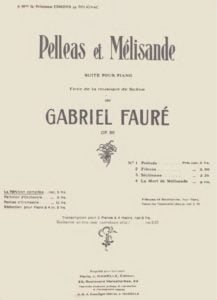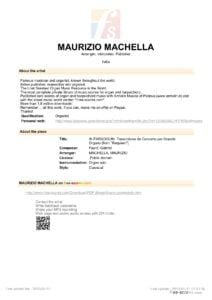Come join us now, and enjoy playing your beloved music and browse through great scores of every level and styles!
Can’t find the songbook you’re looking for? Please, email us at: sheetmusiclibrarypdf@gmail.com We’d like to help you!
Table of Contents
Gabriel Fauré (sheet music in the #smlpdf)
Partitions, sheet music in our Library:

Best Sheet Music download from our Library.

Faure – Pell as et Melisande Op. 80 Sute arr. piano- No. 3 – Sicilienne
Faure Pell as et Melisande Op. 80 Sute arr. piano- No. 4 – La mort de M lisande
Faure Pellas et Melisande Op. 80 Sute arr. piano- No. 1 – Pr lude
Faure-Pie-Jesu-soprano
Fauré Cantique De Jean Racine, Op. 11
Fauré Dolly Suite, Op. 56 (Trans. Cortot Solo Piano)
Fauré – Cantique de Jean Racine Op. 11 Piano Solo arrangement
Fauré – Cantique De Jean Racine Op. 11 Piano Solo Transcription By Ruoshi Sun
Fauré – Pavane op.50 Faure
Fauré 2 Songs Op. 27
Fauré Cantique de Jean Racine satb organ piano
Fauré Gabriel Cantique de Jean Racine trans. piano solo
Fauré Pavane for Piano op. 50
Fauré Pelléas piano solo transc.
Fauré Pie Jesu
Fauré, Gabriel In Paradisum Piano & Organ Transcription
Fauré-Pelleas et Mélisande,Op.80 (trans.Roger-Ducasse-piano 4hands)
Fauré_-_Cantique_de_Jean_Racine,_Op._11 Choeur

Please, subscribe to our Library.
If you are already a subscriber, please, check our NEW SCORES’ page every month for new sheet music. THANK YOU!
Fauré: Complete Nocturnes
Track List:
Gabriel Fauré
Tracklist: 0:00:00 Nocturne No. 1 in E-Flat Minor, Op. 33 No. 1 0:06:31 Nocturne No. 2 in B Major, Op. 33 No. 2 0:12:19 Nocturne No. 3 in A-Flat Major, Op. 33 No. 3 0:16:18 Nocturne No. 4 in E-Flat Major, Op. 36 0:22:28 Nocturne No. 5 in B-Flat Major, Op. 37 0:30:14 Nocturne No. 6 in D-Flat Major, Op. 63 0:38:53 Nocturne No. 7 in C-Sharp Minor, Op. 74 0:47:01 Nocturne No. 8 in D-Flat Major, Op. 84 No. 8 0:49:35 Nocturne No. 9 in B Minor, Op. 97 0:53:16 Nocturne No. 10 in E Minor, Op. 99 0:58:04 Nocturne No. 11 in F-Sharp Minor, Op. 104 No. 1 1:02:02 Nocturne No. 12 in E Minor, Op. 107 1:08:01 Nocturne No. 13 in B Minor, Op. 119
Composed over almost half a century, one by one unlike Chopin’s sets, Fauré’s Nocturnes display the composer’s style in evolution, from the apparent spontaneity and relatively carefree tone-pictures of the early pieces to the unfathomable interior world of the late works.
Gabriel Fauré himself had no special attachment to the genre, nor was he especially concerned to paint nighttime moods and scenes.
Rather, he poured into the genre many of his own private concerns and passions as a composer, experimenting time and again with syncopated rhythms and with luminous harmonies in order to create a mood of serenity and nostalgia that is uniquely his own. Dumont’s new recording is accompanied by a personal essay from the pianist in which we gain valuable insight into each Nocturne from the perspective of a performer immersed in the idiom. On this recording he plays a Gaveau piano from 1922.
